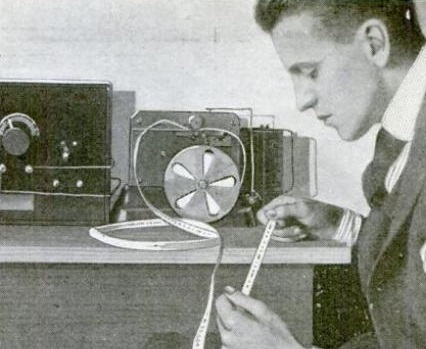 This gentleman, shown in the January, 1921, issue of Popular Science, wasn’t a QRQ operator, but he was still able to copy even the fastest radiotelegraph stations thanks to this device developed by William G. Finch of Buffalo, New York. Instead of the familiar buzz in the headphones, the code was rendered as dots and dashes printed on paper tape, which could be read at the operator’s leisure. The device employed an ultra-sensitive relay along with an “ordinary printing telegraph machine.”
This gentleman, shown in the January, 1921, issue of Popular Science, wasn’t a QRQ operator, but he was still able to copy even the fastest radiotelegraph stations thanks to this device developed by William G. Finch of Buffalo, New York. Instead of the familiar buzz in the headphones, the code was rendered as dots and dashes printed on paper tape, which could be read at the operator’s leisure. The device employed an ultra-sensitive relay along with an “ordinary printing telegraph machine.”
The “ordinary printing telegraph machine” had actually been around for quite some time, since the first telegraphs were designed to print the dots and dashes, rather than be copied aurally. It was later discovered that the operators could hear the letters as they came in, and that became the norm.
